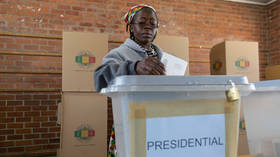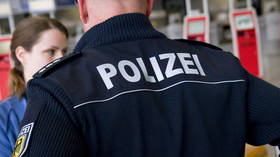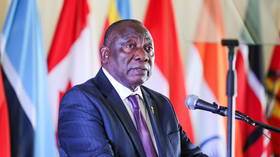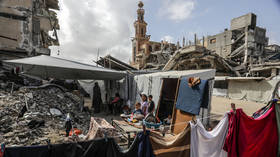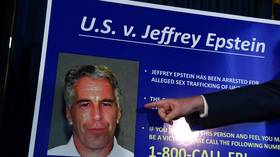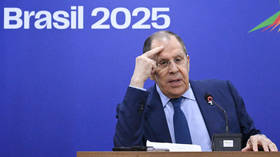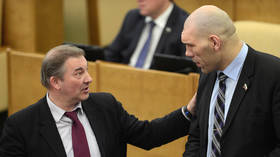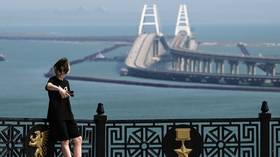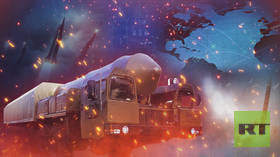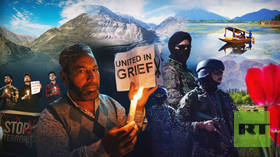Timofey Bordachev: Putin-led forum heralds new stage in Russia’s embrace of Asia
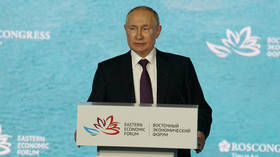
The 2023 Eastern Economic Forum offered a kind of checkup in seeing how Russia’s ‘pivot to Asia’ policy has responded to the demands and needs that emerged last year. It met in Vladivostok for the seventh time. It was first held in 2015, and since then, only the Covid-19 pandemic in 2020 forced its suspension.
For the second year, the forum was held in the context of the acute military and political confrontation between Russia and the West, the main consequence of which – for the global economy – has been the economic war unleashed against us by the US and its allies. The Asian countries, with which the EEF has traditionally focused on intensifying cooperation, are, with a few exceptions, not involved in this war. Of all the regional powers, only Japan has initiated sanctions against Russia, although it is taking a more moderate approach than the US satellites in Western Europe.
Even now, Japanese companies are continuing cooperation projects in the energy sector, for example. Another close American ally in Asia, South Korea, has been reluctant to comply with Western sanctions, and comes across as apologetic each time it is forced to impose new restrictions on trade and technological exchanges with Russia. All the other Asian states have avoided imposing sanctions of their own, although they do not always share Moscow’s position on European and international security issues.
In other words, Asia – as a region – has become Russia’s ‘gateway’ to the global economy, is most active in trade with us, and is engaged in dialogue at the intergovernmental level. This is also confirmed by the results of an analysis conducted by the experts of the Valdai Club in a recently published report on the dynamics of relations between Russia and the Asian countries over the past year and a half.
It should be understood, however, that the Eastern Economic Forum was not conceived solely as a means of more active dialogue with Russia’s external partners. From the very beginning, the main objective of the forum was to promote the vast Russian Far East to coordinate government policy in this area. This goal was identified as one of the most important in President Vladimir Putin’s address to the Federal Assembly in 2013. In addition, the accelerated development of this part of the country has proved to be very prudent in the context of general changes in the global economy and the associated shift of its center of gravity towards the Pacific and Asia.
As the president noted at this year’s EEF, the policy of developing the Far East, and the ‘pivot to Asia’ in general, was therefore very timely. Since the spring of 2022, the West has been pursuing a policy of squeezing us out of world markets, and it was our ties with Asia that played a decisive role in preventing this from happening in the end. It is the Far East and its leading cities, including Vladivostok itself, that have become the main hubs for the new scale of trade and economic relations with Asian countries. Recently, its cargo ports have seen a manifold increase in traffic.
Not surprisingly, one of the region’s key development challenges is now recognized to be the acute lack of technical capacity to handle the ever-increasing volume of exports and imports. Much has been done in recent years to shift a significant share of trade flows to the Pacific so quickly. But until the spring of 2022, the EU states were still Russia’s most important partners. And despite all the growth in throughput capacity, it has not yet caught up with increased demand. Another traditional problem in the region is demographics. The Far East has traditionally had a very small population, and in recent years, there has been no radical solution to the problem of population growth. Nevertheless, economic activity in the region has increased significantly, new universities have been established, and construction is underway.
Now, judging by the discussions at the EEF, the most important area of work is recognized as improving the quality of life, the environment, and the state of the urban environment. In general, everything that makes the European part of Russia and its major cities attractive places to live. These efforts are particularly important in the Far East, where only Primorsky Region (the area around Vladivostok) has truly favorable climatic conditions.
It is no coincidence that China’s northeastern provinces, which border Russia, are also experiencing population decline. This, by the way, should allay all the persistent fears in the media about a mass influx of Chinese citizens to the Far East. So far, we have not even seen a return to the levels of tourism from the neighboring country that existed before the coronavirus pandemic.
More generally, fears about opening up to external partners contradict the approach put forward by Putin at the Eastern Economic Forum: “Russia should be self-sufficient, but that does not mean isolation.”
The main issue is not foreign investment at any price, but the distribution of investment between Russian and foreign companies. That is why the EEF has traditionally been not only about business cooperation, but also about solving the problems of the development of the Far East as a whole. The actions of the Russian government and the initiatives of the business community are closely linked.
Like any region that has long been deprived of objective competitive advantages, the Far East cannot develop by the logic of the market economy alone. Consistent government policy is needed. The Eastern Economic Forum 2023 was a kind of time check to see how the ‘pivot to Asia’ policy has responded to the demands and needs that have emerged over the past year, what has already been done, and what issues have become the most important. Today’s issues shape tomorrow’s agenda. The interim results of their implementation will undoubtedly be discussed at the 2024 Eastern Economic Forum.
